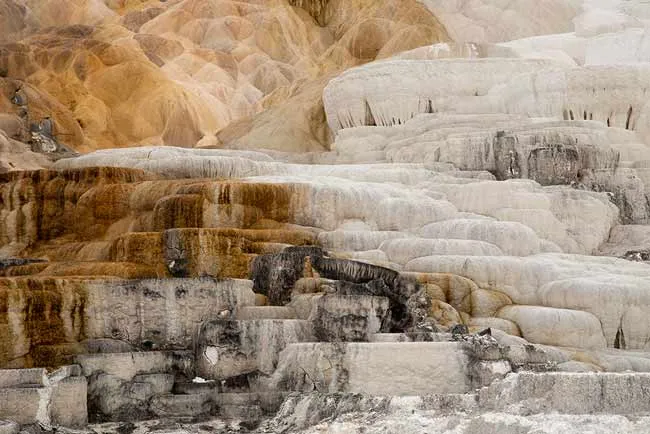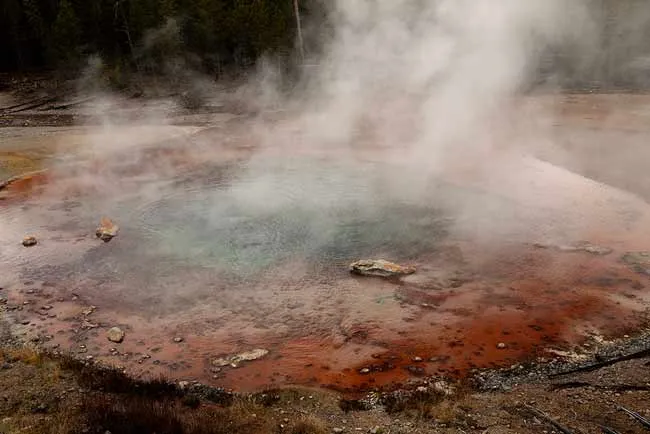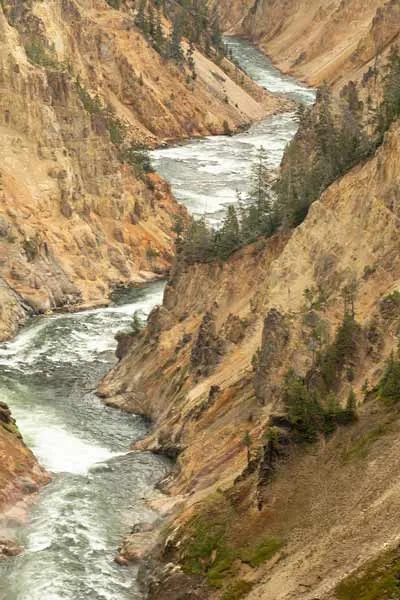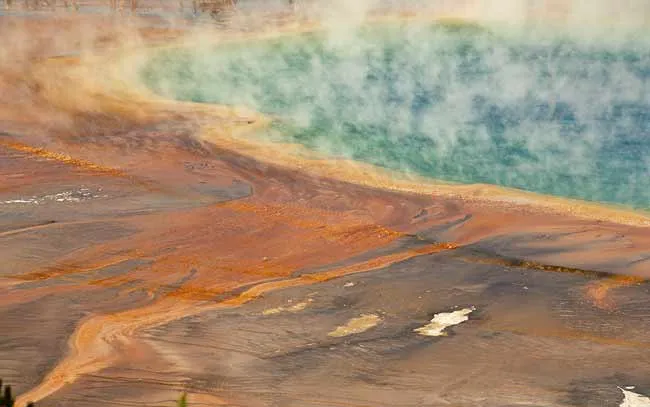Yellowstone, the jewel of America, is more than just a national park; it’s a wonderland of wilderness, where geothermal activity meets majestic mountain beauty. With its deep canyons, magical hot springs, and rich flora and fauna, Yellowstone is a paradise for those who love to explore. But to truly immerse yourself in the heart of this land, there’s nothing better than experiencing a long hike, weaving through trails and discovering hidden landscapes inaccessible by car. This article will be your detailed guide to organizing a memorable hiking trip through Yellowstone, from choosing the right trails to preparing your gear and ensuring safety on your journey.
Why Yellowstone Is a Great Destination for Hiking?
Yellowstone is not only famous for Old Faithful geyser or the Grand Prismatic Spring; this park also boasts a diverse network of hiking trails, suitable for all levels and preferences. From easy trails for families with young children to challenging mountain climbs for professionals, Yellowstone has something to offer everyone.
- Spectacular Scenery: Yellowstone offers a unique combination of magical geothermal features and unspoiled natural beauty. You can hike among bubbling geysers, through vast pine forests, along the shores of clear lakes, or conquer high peaks to admire panoramic views of the park.
- Biodiversity: Yellowstone is home to countless wildlife species, from bison, elk, and black bears to gray wolves and bald eagles. Hiking is a fantastic opportunity to observe these creatures in their natural habitat.
- Close-to-Nature Experience: Unlike traveling by car, hiking allows you to truly feel and immerse yourself in nature. You can listen to birdsong, smell the scent of pine forests, and sense the grandeur of the surrounding landscape.
- Health Benefits: Hiking is an excellent physical activity, helping you improve cardiovascular health, increase endurance, and reduce stress.
Choosing the Right Hiking Trails
With over 900 different hiking trails, choosing the right route in Yellowstone can be overwhelming. Here are some suggestions based on areas and types of experiences you desire:
Mammoth Hot Springs Area
This area is famous for its white travertine terraces and magical hot springs.
- Mammoth Hot Springs Terraces Trail: (3.5km long, 100m elevation gain, moderate difficulty). This trail takes you through stunning travertine terraces, including Cleopatra Terrace and Jupiter Spring. It’s a great option for exploring the unique geothermal features of the area.
- Upper Terrace Drive: (Driving combined with short walks). Although primarily a driving route, there are many stops and short walkways leading to Canary Spring and Orange Spring Mound, suitable for families and those with limited mobility.

Norris Geyser Basin Area
Norris Geyser Basin is the hottest and most dynamic geothermal area in Yellowstone, with many diverse geysers and hot springs.
- Back Basin Trail: (2.6km long, easy to moderate difficulty). This trail takes you past Emerald Spring, Steamboat Geyser (the world’s tallest active geyser), and Mud Geyser. Be prepared for the distinctive sulfur smell!
- Porcelain Basin Trail: (1.5km long, easy difficulty). This trail offers panoramic views of the Porcelain Basin area with brightly colored hot springs like Porcelain Springs.

Grand Canyon of the Yellowstone Area
The majestic Grand Canyon of the Yellowstone is one of the must-see highlights of the park.
- North Rim Trail: (Various sections, easy to moderate difficulty). This trail has many scenic viewpoints such as Brink of the Lower Falls, Lookout Point, and Grandview Point, allowing you to admire the Lower Falls and the canyon from multiple perspectives.
- South Rim Trail: (Various sections, easy to moderate difficulty). Stop at Artist Point for panoramic views of Upper Falls and the canyon.

Yellowstone Lake Area
Yellowstone Lake is the largest high-elevation lake in North America, offering peaceful scenery and opportunities to explore the lakeside ecosystem.
- Colter Bay Lakeshore Trail (Grand Teton near Yellowstone): (4km long, easy difficulty). Although located in Grand Teton National Park nearby, this trail is a great option for lakeside walking, admiring mountain reflections on the water, and having the chance to encounter wildlife.
- Lake Butte Overlook Trail: (Short uphill walk). This short walk leads to a high viewpoint, allowing you to admire panoramic views of vast Yellowstone Lake.
Midway Geyser Basin Area
Midway Geyser Basin is home to the world-famous Grand Prismatic Spring.
- Fairy Falls Trail to Grand Prismatic Overlook: (4.8km round trip to Grand Prismatic Overlook, easy to moderate difficulty). This is the only trail that allows you to get a panoramic view of Grand Prismatic Spring from above, an unmissable moment to admire the brilliant colors of Yellowstone’s largest hot spring.
- Midway Geyser Basin Boardwalk: (Short walk on boardwalks). Easily access the edge of Grand Prismatic Spring and other hot springs in the area like Excelsior Geyser Crater and Opal Pool.

Note: Trail difficulty can vary depending on weather conditions and individual fitness levels. Always check the latest trail information at visitor centers before starting your journey.
Best Time to Hike in Yellowstone
Summer (June to September) is the most popular time to hike in Yellowstone, with warm, sunny weather and all trails open. However, this is also the peak tourist season, the park will be more crowded and service prices will be higher.
- Spring (April – May) and Fall (September – October): These are good options to avoid crowds and enjoy cooler weather. However, some high-elevation trails may still be closed due to snow in spring or may close early in fall. Weather can be unpredictable, so be prepared for both sun and rain.
- Winter (November – March): Yellowstone in winter offers a completely different beauty, peaceful and quiet. However, most hiking trails are closed due to heavy snow. Popular winter activities include snowshoeing and cross-country skiing.
Tip: No matter what season you go, always check the weather forecast before you go and prepare clothing suitable for the weather conditions.
Preparing for Your Hiking Trip
To have a safe and enjoyable hiking trip in Yellowstone, thorough preparation is crucial.
Essential Equipment
- Hiking boots: Choose comfortable boots with good grip and ankle support.
- Backpack: Choose a backpack of appropriate size for your needs, with enough space to carry water, snacks, a jacket, map, and other essentials.
- Clothing: Dress in layers to easily adjust to the weather. Bring a waterproof and windproof jacket, warm layers, long pants, hat, and gloves (especially if going in spring or fall).
- Water: Bring enough water for the whole day, at least 2-3 liters per person. You can use personal water bottles or a hydration system.
- Snacks: Bring energy-rich snacks like protein bars, dried fruit, nuts, and biscuits to replenish energy on the trail.
- Map and compass/GPS: Even if you use map apps on your phone, always bring a paper map and compass in case of signal loss or battery depletion. GPS is a useful tool but also needs a backup battery.
- Sunscreen, sunglasses, and hat: Protect your skin and eyes from the sun, especially at high altitudes.
- Insect repellent: Insects can be a problem, especially in summer.
- First-aid kit: Bring a compact first-aid kit with bandages, antiseptic wipes, pain relievers, and other personal medical supplies.
- Flashlight or headlamp: Necessary if you plan to hike early in the morning or late afternoon, or if you are hiking on longer trails.
- Hiking poles (optional): Hiking poles can help reduce pressure on your knees and increase stability, especially on steep or uneven terrain.
- Binoculars (optional): Great for observing wildlife from a distance.
- Bear spray (optional, but recommended in bear country): If you are hiking in bear habitat, bring bear spray and know how to use it.
Permits and Regulations
- Park entrance fee: Yellowstone charges an entrance fee, you can buy a day pass or an America the Beautiful Pass if you plan to visit multiple national parks.
- Camping and overnight backpacking permits (if needed): If you plan to camp in the park or go on overnight backpacking trips, you may need a permit. Check the detailed information on the Yellowstone National Park website.
- Compliance with regulations: Always comply with park regulations, stay on marked trails, do not feed wildlife, and maintain a safe distance from animals.
Safety While Hiking in Yellowstone
Yellowstone is a wilderness area, ensuring safety is a top priority.
- Wildlife: Yellowstone is home to many wildlife species, including bears, bison, elk, and wolves. Always keep a safe distance from animals, do not approach or feed them. Carry bear spray and know how to use it if you are hiking in bear country.
- Geothermal Hazards: Geothermal areas in Yellowstone are beautiful but also potentially dangerous. Never go off marked trails, do not touch water or rocks near hot springs or geysers, as the water can be very hot and cause severe burns.
- Unpredictable Weather: Weather in Yellowstone can change rapidly, especially at high altitudes. Always check the weather forecast before you go and be prepared for all conditions.
- Altitude: Yellowstone is at a relatively high elevation, which can cause altitude sickness symptoms in some people. Drink plenty of water, avoid overexertion, and ascend gradually to allow your body to acclimatize.
- Hiking Alone: If possible, hike with friends or family. If you hike alone, let someone know your itinerary and expected return time.
- Always carry a map and compass/GPS and know how to use them.
- Stay on marked trails: Hike on marked trails to avoid getting lost and protect the natural environment.
Suggested Itineraries for Hiking Trips
Here are a few suggested hiking itineraries in Yellowstone, you can adjust them to suit your time and preferences.
3-Day Hiking Itinerary Exploring Yellowstone:
- Day 1:
- Morning: Explore the Mammoth Hot Springs area, hike the Mammoth Hot Springs Terraces Trail and Upper Terrace Drive.
- Afternoon: Move to the Norris Geyser Basin area, hike the Back Basin Trail and Porcelain Basin Trail.
- Evening: Wildlife watching at Gibbon Meadow in the late afternoon.
- Day 2:
- Morning: Explore the Grand Canyon of the Yellowstone, hike the North Rim Trail, visit Brink of the Lower Falls and Lookout Point.
- Afternoon: Explore the South Rim Trail, enjoy the view from Artist Point.
- Evening: Stop at Sulphur Caldron and Yellowstone Lake.
- Day 3:
- Morning: Explore Midway Geyser Basin, hike the Fairy Falls Trail to see Grand Prismatic Spring from above and walk on the boardwalks at Midway Geyser Basin.
- Afternoon: Explore Fountain Paint Pot, Biscuit Basin, and Black Sand Basin.
- Evening: End your trip by admiring Old Faithful geyser at Upper Geyser Basin.
5-Day Itinerary Combining Hiking and Sightseeing:
- Days 1-3: Follow the 3-day hiking itinerary above.
- Day 4:
- Morning: Hiking in the Yellowstone Lake area, explore Colter Bay Lakeshore Trail (if you move to the Grand Teton area) or Lake Butte Overlook Trail.
- Afternoon: Visit the Canyon Village Visitor Education Center to learn more about Yellowstone’s geology and ecosystem.
- Evening: Relax at your campsite or accommodation.
- Day 5:
- Morning: Take a boat tour on Yellowstone Lake or go fishing (if you have a permit).
- Afternoon: Explore more attractions along your route as you leave the park, such as Wind Cave National Park (if heading south) or the town of Jackson Hole (if heading south or west).
Note: These are just suggestions, you can customize the itinerary to suit your preferences and time. Take time to research trails and attractions to plan your detailed hiking trip.
Useful Tips When Hiking in Yellowstone
- Start early: Start your hiking day early to avoid the midday heat and have more time to explore.
- Carry a map and compass/GPS and know how to use them.
- Stay hydrated: Keep your body hydrated by drinking water regularly throughout your hike.
- Eat adequately: Replenish energy with snacks and a full lunch.
- Go slow and enjoy: Don’t rush, hike slowly, enjoy the scenery and experience nature.
- Leave no trace, pack out everything: Be a responsible visitor, do not litter and pack out everything you pack in.
- Share your experience: After your trip, share your experience with friends and family, or on travel forums to encourage people to explore the beauty of Yellowstone on foot.
Conclusion
Hiking through Yellowstone is a unique and memorable travel experience, offering a wonderful opportunity to explore the unspoiled, majestic, and magical beauty of this famous national park. With thorough preparation and an adventurous spirit, you will have a fulfilling and meaningful journey exploring Yellowstone on foot. Plan your trip today and start your adventure conquering the beautiful trails of Yellowstone!